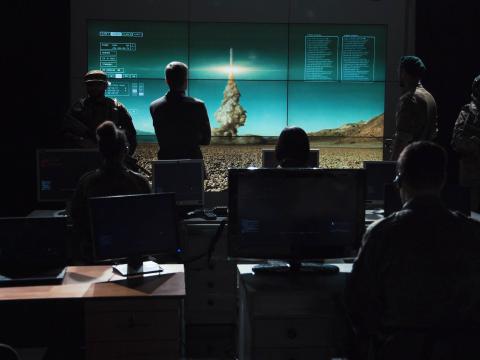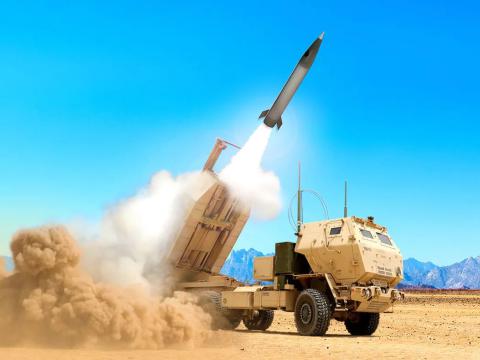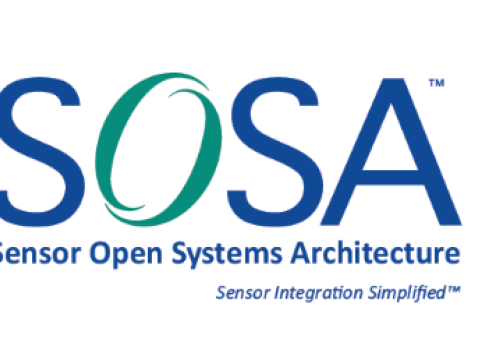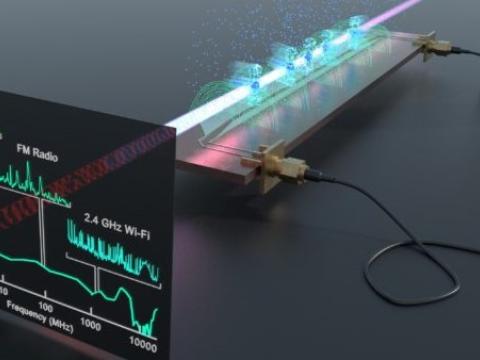Technology Aids, Hinders Command and Control
The revolution in information technology has been a boon to military command and control capabilities, but it also has introduced a new set of challenges to operational commanders. These technologies have complicated the process of command and control while simultaneously softening the basic understanding of its principles.
Sailors collect and analyze weather observations at the Naval Aviation Forecast Center at Naval Station Norfolk. Information technology provides more valuable information to commanders than ever, but its users face challenges in exploiting it effectively without sacrificing key tenets of command and control.
Some badly needed basics are taking a back seat to electrons.
The revolution in information technology has been a boon to military command and control capabilities, but it also has introduced a new set of challenges to operational commanders. These technologies have complicated the process of command and control while simultaneously softening the basic understanding of its principles.
Commanders now have more information at their fingertips and more options at the ready. Similarly, they are able to provide more information and options down the chain of command to the warfighter.
But, all that information poses new challenges. Commanders may not know if their decision-supporting data are accurate. Nor may they know how to command and control their forces if networking capabilities are interrupted or denied. And, increasing amounts of data threaten to overwhelm commanders with information overload that actually hampers their decision-making ability.
Ultimately, the solution may be a return to basics on the human side of the equation. Adm. Richard C. Macke, USN (Ret.), believes that not enough people have a real understanding of command and control (C2), how to use it and what is required to ensure effective C2 across all assigned forces. He views it as a continuous activity employed by commanders at all levels of the chain of command, not just an activity practiced only during specific operations.
Adm. Macke has the unusual perspective of having served as the military’s top communicator and as a unified commander. In the early 1990s, he was the director for command, control, communications and computer systems, J-6, the Joint Staff. Later, the admiral served as commander of the U.S. Pacific Command, which has the largest area of responsibility for U.S. forces. His perspective comes from those experiences as well as contact with existing active-duty officers.
“I know several people in uniform who are absolute experts in command and control. They understand it, know how to use it and use it to their advantage,” Adm. Macke declares. “I am not sure that is universal across the uniformed services.
“Some people assume command and control is just, ‘I wrote a tasking order and people are there to do it,’” he charges. “I don’t think they have an understanding of the full loop of events that have to occur to provide winning command and control.”
C2 is basic to the military’s ability to take on any mission, whether combat or humanitarian aid, Adm. Macke observes. “You still need to detect, analyze, decide and execute—and then monitor what you’re doing to ensure that the reactions you’re getting are what you hoped for,” he relates. “That part of command and control, which has existed through the ages, still is there.”
Adm. Macke lists those five actions as the nodes of the C2 loop. The detect node amasses vast amounts of data about the normal operational environment and any evolving crisis from across the sensor spectrum. Analysis fuses that data into useful information for the commander. The decision node transforms information into actionable knowledge on which the commander can base alternative courses of action. Next, execution disseminates the orders out to the forces to begin an operation. For the fifth node, the commander monitors the operation and makes any alterations necessary to counter an unanticipated enemy reaction or unexpected change in a noncombat situation. The admiral believes that commanders should think through those five actions as they engage in C2.
An over-reliance on advanced information technology systems can prove to be a problem when those systems go down, Adm. Macke cautions. He cites the experiences of the relief operations launched by the U.S. military in the wake of the damaging earthquake and subsequent tsunami that devastated Japan last year. With all local infrastructure wrecked by the cataclysm, forces needed to use ordinary voice communications to carry out their mission as quickly as possible.
The dramatically improved connectivity that has resulted from network centricity has changed the way afloat assets operate under command. While persistent C2 theoretically could result in a breakdown in the chain of command, it instead has improved battlespace C2, the admiral offers. He notes that in the past, when the Navy relied on high-frequency links that provided relatively poor connectivity, ships’ commanding officers were expected to observe and react to situations on their own without any direction from above. They were given a mission, and they executed it according to their situational observations.
Now, however, commanders back on land—including the president in the White House situation room—can see what is happening in the battlespace in real time, and this changes the environment significantly, the admiral says. “The more [information] we can send down to the tactical individual unit level, the better off we are.”
That two-way information flow brings with it another challenge—the potential for commanders far from the battlespace to micromanage operations. Adm. Macke warns that this runs the risk of bad command decisions because, no matter how much information flows up the chain of command, the chief officer in the command center or the situation room does not have the “aura or sense” of awareness that comes from being amidst the action in theater. “What that person out there can see, sense, feel and react to does not exist back in the situation room,” he emphasizes.
C2 is not broken, Adm. Macke emphasizes, but it can be improved in several areas. One such area is in the new concept of “C2 of C2.” Being able to command and control one’s own C2 is vital in the information dominance age. Adm. Macke notes that even though cyber has been added as a fourth warfighting domain, it also is the enabler of C2, and it controls the other three warfighting domains.
Technology has enhanced the capabilities of C2, but it is not a panacea. “We’re never going to replace the human mind,” he points out. “The capability of the human to … have the aura and sense of what’s going on is irreplaceable.
 |
|
U.S. Navy sailors assigned to Naval Air Facility Misawa remove damaged cabling in Japan as part of disaster assistance efforts immediately following the devastating earthquake and tsunami that struck last March. Much of the local infrastructure was destroyed or was inoperable, which forced relief workers to rely largely on voice communications. An over-reliance on advanced networking technologies can cause severe problems when those technologies are unavailable. |
“Look at what you’re being presented; look at what you have available to you; and then use your own judgment as to whether that’s the right thing, whether you really want to react to what you think you’re being told, or you want to have some more information,” he advises.
One problem that technology has introduced to C2 is data overload, Adm. Macke offers. The flow of data has increased exponentially to the point where it is overloading the human capability to exploit it properly. Ironically, the solution may lie in technology. Adm. Macke offers that improved servers and fusion devices may hold the key to processing that data into information that can be used by warfighters.
Credibility is an ongoing concern for the former J-6. “What is the credibility of what my C2 system is telling me?” he asks. “What is the credibility of the picture that I’m getting—not only of enemy forces, but also of my own forces and neutral forces?
“If you have a single hit on a contact from a single source, that’s not really credible because I can play games with that. If I have multiple hits, then the credibility goes up with each one of those hits. That sort of information is something that we need to display, and in the systems I have seen we are not displaying it,” he states. “Don’t take everything you’re given at face value; always question.
“It’s the power of the computer that will help us resolve this plethora of data we have to create information and then actionable knowledge that the warfighting commander can use,” Adm. Macke emphasizes.
For the near future, information fusion is the most important—and likely—capability that technology can bring to bear on C2, he continues. Credibility is next, and it may not be that difficult to achieve.
Following those technology-generated capabilities would be simulation to evaluate courses of action. This entails having a technology rapidly model three different courses of action so the field commander can view potential consequences of operational decisions. This commander then would be able to proceed with a better feel for what may lie ahead.
One potential drawback would be having an enemy possess the same technology and thus be able to model the allied commander’s potential decisions. That technology literally might give the adversary insight into the commander’s decision making. Adm. Macke offers that the counter to that challenge would be to make sure that the allied commander’s decision loop is faster than the enemy’s.
Accordingly, any technology that helps speed up the C2 loop will help provide a big advantage to commanders. An automated system for issuing tasking orders is one option, the admiral says. Complementary to that system would be a situational awareness picture that provides an accurate assessment of the forces that would carry out the tasking orders. “You need a status of your own forces that is an input into the evaluation of alternatives, so that when you assign forces, you know you’ve assigned the correct forces,” he states.
Another advantageous asset would be technology that helps disseminate orders out to the force quickly, Adm. Macke suggests. Also, forces need the offensive and defensive cyber capabilities that ensure the veracity of decisions for commanders—as well as capabilities that ensure that the enemy’s decision criteria are not accurate, he says.
For the future, maintaining effective C2 will require recognizing the impact of cyber on C2, Adm. Macke warrants. This encompasses cyber offense, cyber defense and cyber exploitation. Cyber can be used to an advantage through controlled offensive cyber operations, he notes. Disrupting an enemy’s C2 cycle will provide an advantage, as will injecting false information into an enemy’s C2.
Of course, an enemy can do the same to the United States and its coalition allies, so defensive cyber is vitally important. This touches on the issue of information credibility and having multiple sources, he relates. “I can make an aircraft carrier look like an oiler; I can make two Aegis [ships] stuck together look like an aircraft carrier, and that’s a beautiful missile trap,” the admiral offers. The United States as well as its enemies possess these capabilities, and having multiple sources helps reduce the possibility of being fooled by digital disinformation.
The introduction of cyber into C2 represents a quantum leap in C2 capabilities. Near-term C2 advances likely will take the form of refining existing technologies and capabilities, Adm. Macke predicts. Looking farther ahead, he offers that artificial intelligence in the decision process has the potential to provide significant breakthroughs.
Coming next month: Our Semaphore series continues with an interview with John Grimes, former ASD NII.




Comments